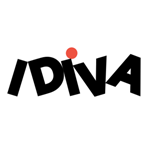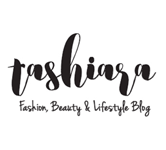6 Types of acne no one talks about

Do you know that there are six types of acne? Sadly, we all regard the six of them as acne or pimples. No matter what their names are, they will always be depressing. A study has found that acne and other skin conditions affect 85% of young adults.
This article explores the different types of acne, its symptoms, and ways to treat them.
Types of acne:
1. BlackheadsAs the name suggests, blackheads appear black on your skin. Scientifically, they are known as open comedones. They usually appear on the nose, chin, neck, back, and chest.
Blackheads occur when a clog grows in your hair follicles. Each follicle releases sebum (the natural oil of the skin). When dead skin cells mix with Sebum, they lead to comedo (small bumps) and clogged pores.
Factors causing blackheads:
- Hormonal changes that increase oil production
- Oil-based makeup products
- Medical conditions like Polycystic Ovarian Syndrome (PCOS), etc.
- Steroid-based medications or drugs
- Pollution and humidity
- Excessive sweating
Whiteheads, also called closed comedones, also pop up when a pore gets clogged by oil and dead cells. But unlike blackheads, the pores remain closed off by a layer of skin.
Whiteheads can occur anywhere on your body. Common places are the T-zone, back, shoulders, and arms.
Factors causing whiteheads:
- Increase sebum production
- Bacteria causing acne
- Using greasy skin products
- Humidity and sweating
An acne papule is a solid, inflamed blemish, usually appearing red and smaller in size. They form when the follicle walls mounting your pores break down. This results in rigid pores that may fill up with pus and can turn into an acne pustule.
Factors causing acne papules:- Pollution and dirt
- Hormonal Change
- Puberty
Uncommon factors:
- Eczema: inflamed skin and blisters
- Dermatitis: Allergic reactions caused by an external agent or touch of a material
- Warts: leads to rough skin and bumps
- Actinic Keratosis: caused by too much skin exposure
If you experience something like this, go to a doctor. It is hard to treat them at home
4. PustulesPustules are a type of red and inflamed pimple. They often look like whiteheads with red bumps. The bump is infused with white or yellow pus. They are relatively larger than papules. And resemble on the face and back.
Most pustules are safe. But they sometimes can lead to excessive swelling and pain, resulting in a serious skin infection.
Factors causing Pustules:
- Psoriasis: immune-related disease resulting in itchy and raised patches
- Rosacea: small, red, pus-filled bumps on the skin
Nodules are large, clogged, and swollen pores that develop when the hair follicle wall breaks down within the skin. They sometimes feel hard and sore. They can occur on the face, chest, and any other part of the body.
While papules and pustules happen at the surface, nodules are deeper underneath the skin.
Factors causing Nodules:
- Increase in androgen hormones (stimulates puberty)
- Acne-causing bacteria
- Build up of dead skin cells.
Cysts are formed when pores are blocked by a combination of sebum (oil), dead skin cells, and bacteria. Acne cysts are too filled with pus. They are among the most acute types of acne. Just like nodules, they are also deeply rooted within the skin. They can appear on the back, chest, and butt.
Factors causing Cysts:
- Hormonal changes
- Stress
- Conditions like menopause
How to treat different types of acne?
- Wash your face daily at least two times a day. It’s important to clean your skin before you go to bed. Always look for a face wash that is mild and has useful ingredients like neem, jojoba ester, Vitamin E, turmeric, etc.
- Exfoliate your skin regularly. It removes the top layer of the skin which prevents dead cells from accumulating.
- Spot treatment can work very effectively. In this, you apply anti-acne products to your pimples overnight. It can reduce swelling, pain, and redness. An anti-acne gel can keep the skin clear of pimples.

- If you develop serious breakouts, then do consult your dermatologist. He or she is your best line of defense.








